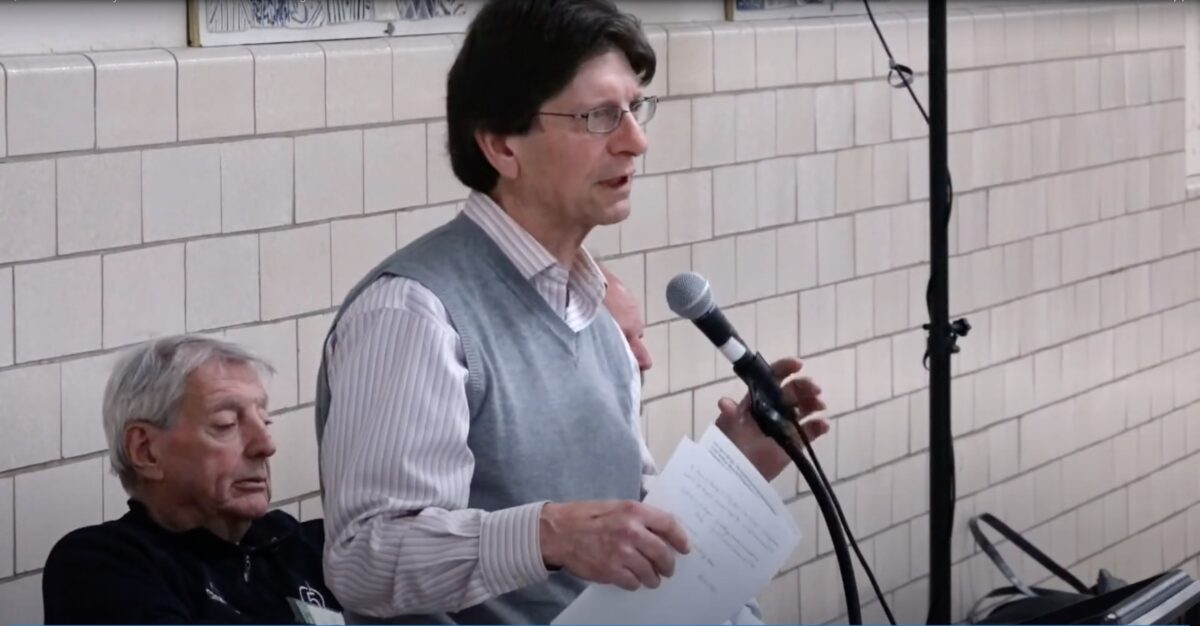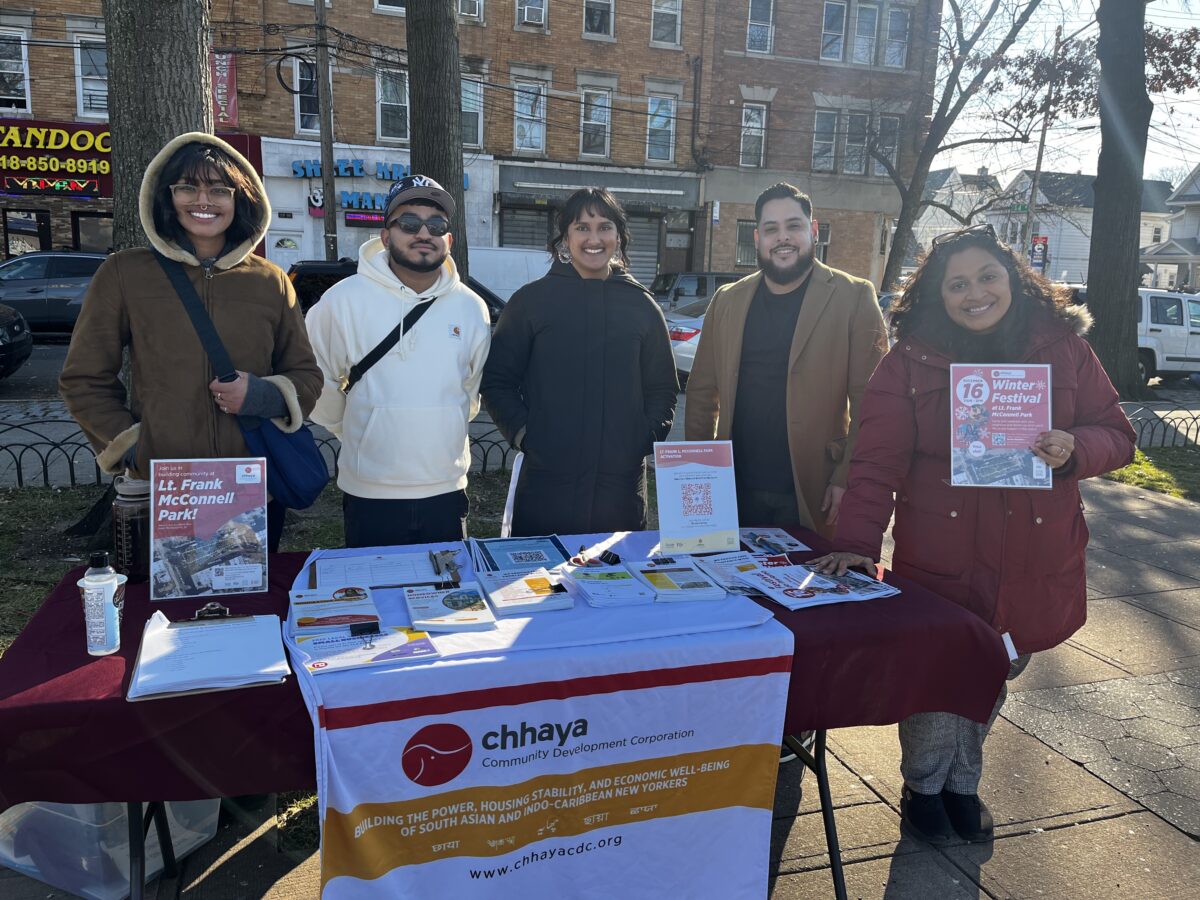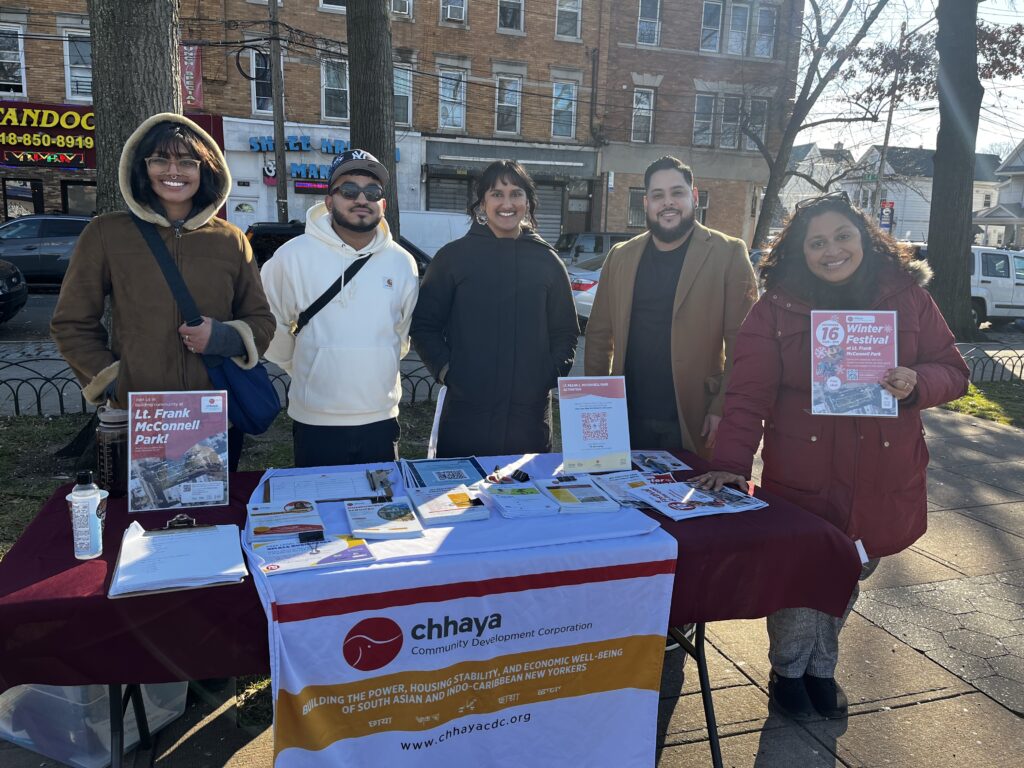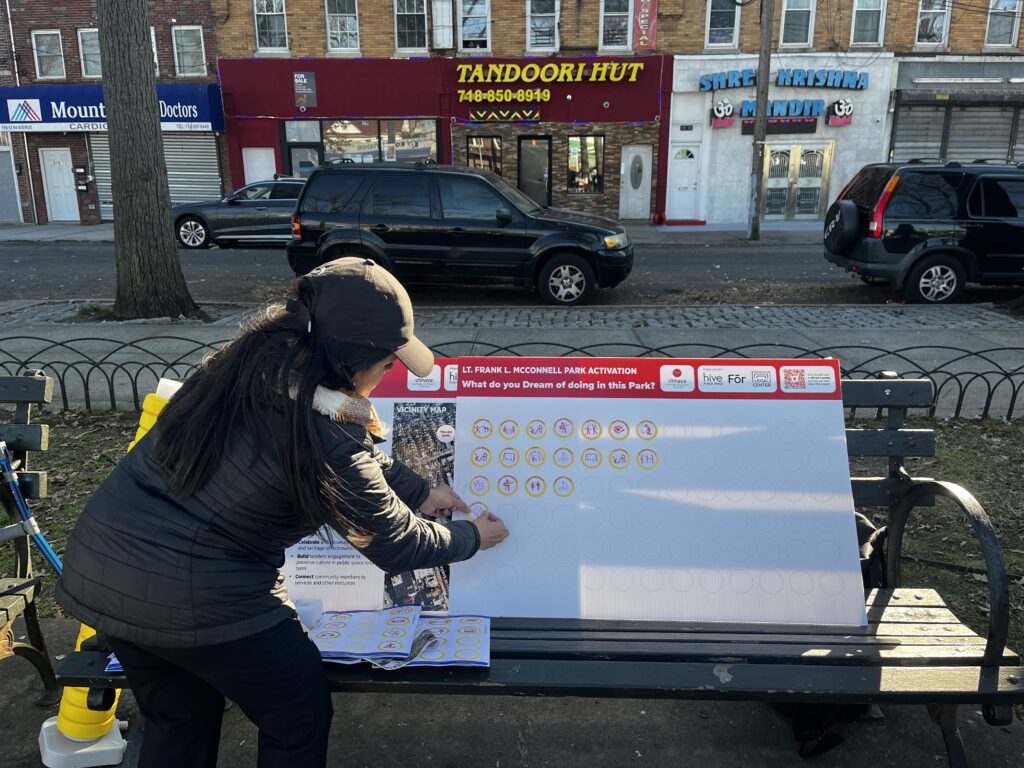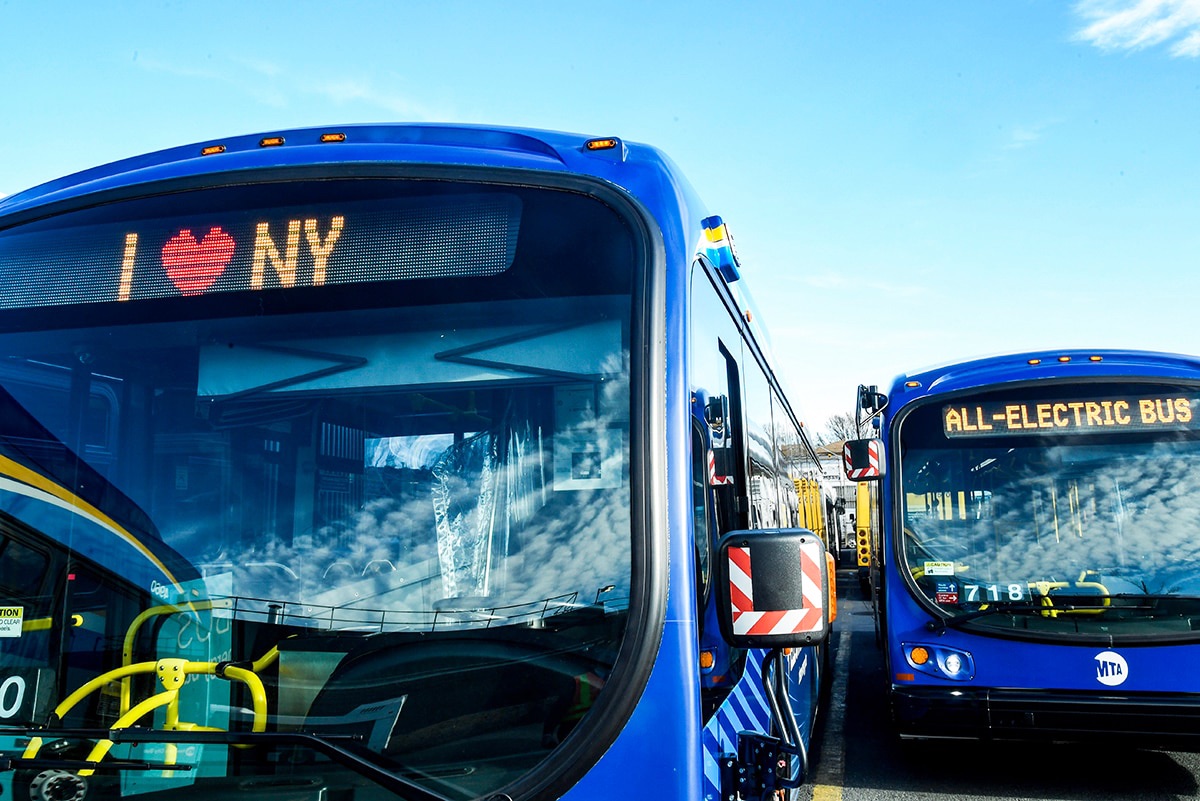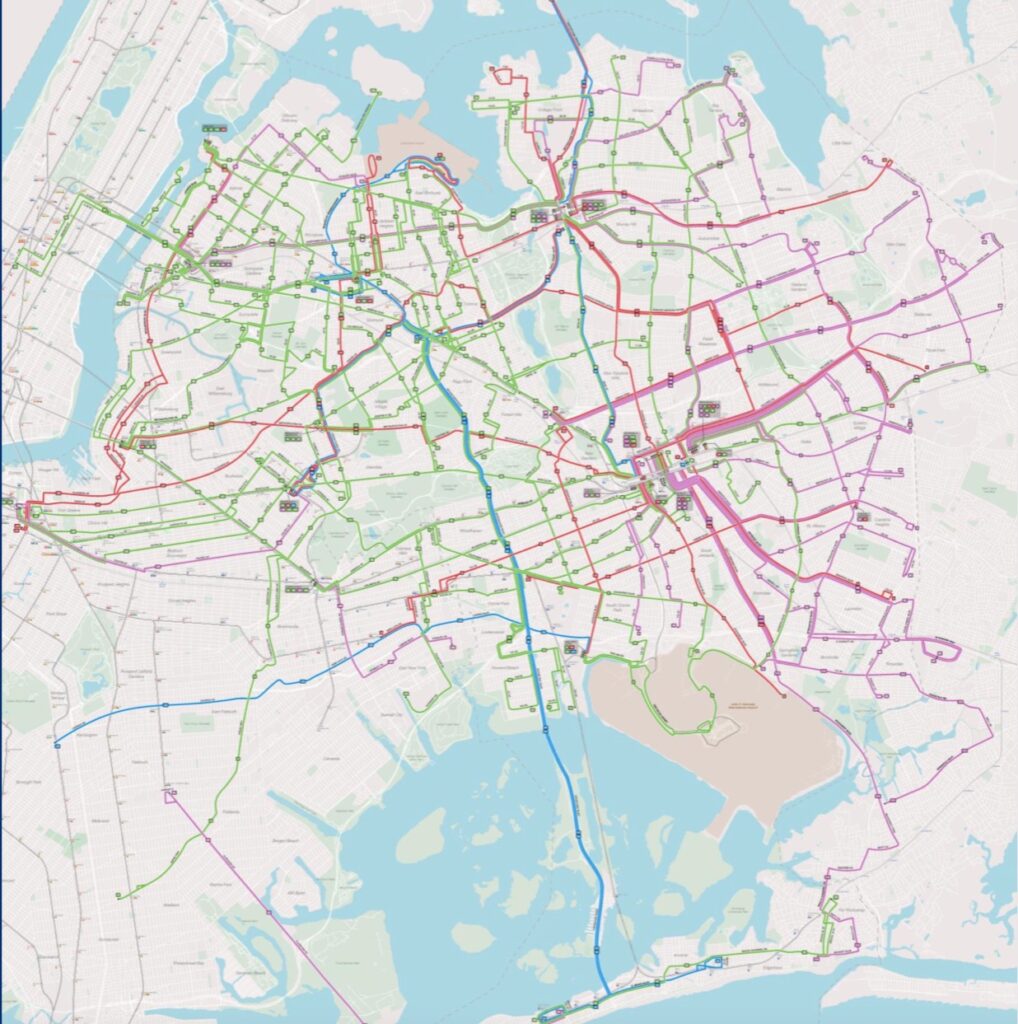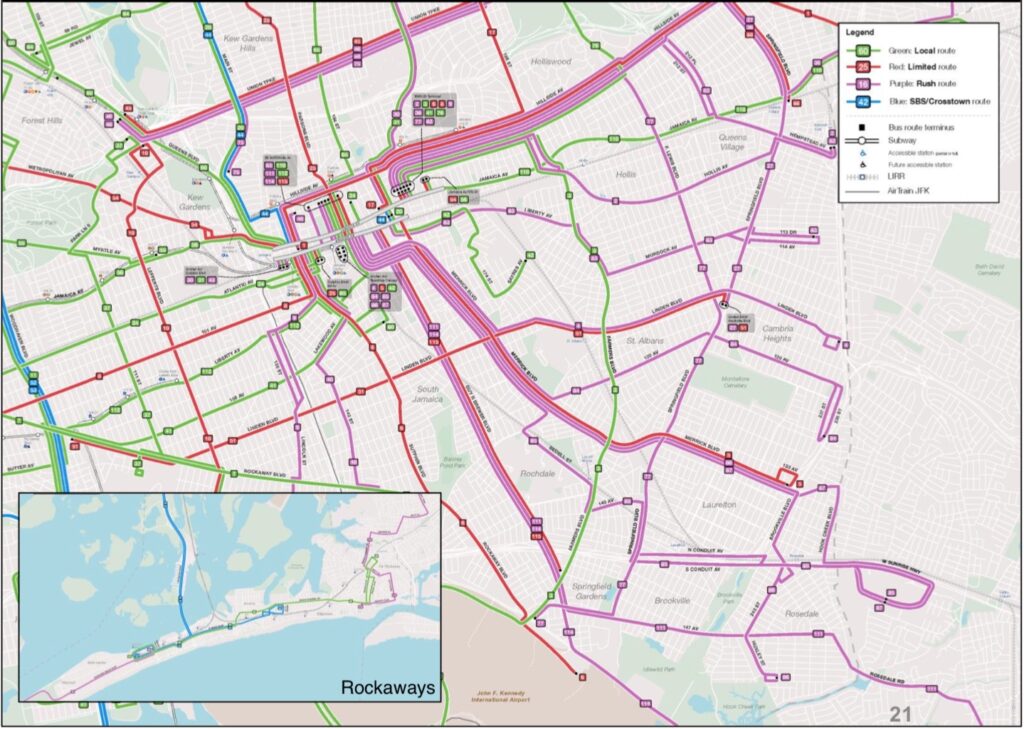Contaminated Site and Cannabis Confusion at CB5
By Celia Bernhardt | cbernhardt@queensledger.com
Community Board 5 gathered for a full-board meeting last week in Christ the King High School’s cafeteria. Highlights from the meeting included an update about a nearby contaminated site and full-board votes on adult-use retail cannabis license applicants.
Radioactive Contamination Cleanup in Ridgewood
In his District Manager’s report, Gary Giordano called attention to a piece of environmental news in the area: a contaminated site located at 1127 and 1129 Irving Avenue in Ridgewood is set to undergo a demolition and cleanup process this January.
The site was home to the Wolff-Alport Chemical Company from 1920-1954. The company’s activities involved processing monazite sand, which contains Thorium, a “naturally occurring radioactive substance found in small amounts of rocks, soil, and water” according to the EPA.
The EPA is set to demolish four buildings on the site and remove all debris, a process that will run from January to late April. “What they’re gonna do to control the dust is they’re gonna keep the area wet down,” Giordano said. “The area is fenced, but they’re not going to tent the area. They think it’s safe enough that they can do what they intend to do.”
After this phase is completed, the removal of Thorium-contaminated soil will begin.
“In some areas the contamination of the soil is quite deep, especially under one or more of the buildings,” Giordano said to the board. “Other areas, the contamination may only be four feet down.”
“Some of it is in the city sewer system,” Giordano added later. “So they’re going to try to flush that out, and whatever they can’t flush out, they’re going to replace the sewer line.”
The site was added to the EPA’s Superfund National Priorities List in 2014. Now that cleanup is set to begin, Giordano says that the EPA’s communication leaves much to be desired.
“I don’t think the outreach was too good by the EPA, because they didn’t even contact us directly,” Giordano said, explaining that he found out about the initiation of the cleanup “through the grapevine” instead.
Giordano called the contamination removal a “slow and expensive process.”
“The last I know—and I don’t know if the price tag went up—it was $30 million to do this removal,” he said.
“They do not think that it is a significant risk to the people who are even nearby,” Giordano said. “From what I know, the worst levels of radiation are under the buildings where the work was being done. So they kind of just dumped into a pit in the buildings, they dumped into the city sewer system, and now the department of environmental protection, with your water and sewer charges, has to pay to remediate the sewer problems.”
Later, Chairperson Vincent Arcuri Jr. clarified that the EPA would “keep going till they get rid of it.”
Cannabis License Headaches
Shortly after Giordano’s report, the Liquor License and Cannabis Committee took to the floor. Maryann Lattanzio presented the committee’s recent review of five applicants for adult-use retail cannabis dispensary licenses, inviting the board to vote either for or against the committee’s own decision on each applicant.
Votes were cast between long sidetracks of confusion, questions, and clarifications.
The first applicant, Lattanzio explained, initially came with two proposed locations—64-40 Myrtle Avenue and 71-05 Myrtle Avenue. The committee had voted against the first site on the grounds of its proximity to Saint’s Church. The majority of the board voted to uphold that decision.
71-05 Myrtle Avenue was next. This location had received a split vote by the committee earlier in the month, with three in opposition on the grounds that it lay close to Forte Prep High School (though whether or not it would be legally too close was unclear). There was confusion about the hypothetical dispensary being at the address which currently houses a gas station and liquor store; then there was confusion about which distance regulation, if any, the location would be in violation of, as board members cited a nearby church and mosque.
The board’s vote was split approximately two-to-one, with those “for” upholding the committee’s opposition winning the majority.
66-74 Fresh Pond Road was introduced next. Lattanzio told the board that the committee voted to oppose the location “based on the proximity to Benninger playground.”
Board Member Carol Benvic-Bradley raised a question in response. “It’d just be helpful, I think, when we’re hearing these proposals for ‘for’ or ‘against,’ if we could cite the specific rule. So, proximity to a playground—is there a certain [distance] that it should be away? And does it fall inside of that requirement or outside of it?”
“To my knowledge, it’s similar to a school in that you shouldn’t be 500 feet from the playground site,” Giordano said. “This is less than that.”
Board Member Diego Leclery spoke next. “It seems to me from having attended one of these meetings that these guidelines are being interpreted quite freely,” he said. “We should be very mindful that if we interpret these rules to include every area that a young person might be near or in, we’re going to make legal cannabis impossible in this city and we’re going to help the proliferation of illegal cannabis.”
Lattanzio also mentioned, later in the discussion, that the applicant neglected to show up to the committee’s meeting or fill out the questionnaire sent to him.
“It’s very alarming when someone does not respond to the community board’s request,” CB5 Financial Secretary Eric Butkiewicz said. “This is when they’re trying to get something from us, and this is how they’re behaving. When they dont need something from us, think how they’re going to behave towards us.”
After more comments and questions about distance regulations, the board voted to uphold the committee’s recommendation.
66-33 Fresh Pond Road was up next—the first to have earned a committee stance of “not opposed” through a 3-2 vote earlier in the month. Votes opposed to the location were due to its placement on the same street as Benninger Playground, though it exceeded 500 feet in distance. After some varied discussion, the board voted in favor of the committee’s report.
78-10 Cypress Avenue followed. Unlike previous sites, this one would be located in a manufacturing zone, farther from residential and community corridors. The applicant earned a unanimous vote of “not opposed” from the committee, which the majority of the board voted to uphold.
The last location was 55-41 Myrtle Avenue, which the committee opposed based on its under-200 feet proximity to a synagogue.
“We also believe he was selling cannabis illegally, as he had already had the sign put up,” Lattanzio said. “And an armed robbery took place on December 4th at night at that location.”
Lattanzio went on to say that on the morning of the committee meeting earlier in the month, she passed by the location and saw that the applicant had put up a sign advertising cannabis products—something the state doesn’t allow even after one has obtained a license, much less before.
“The lawyer didn’t know about the sign being put up,” she said, referencing the applicant and lawyer’s visit to the committee meeting. “He told us he was going to cover it up with black markings, which he didn’t.”
The board voted unanimously for the first time in the night, standing by the committee’s report.


